Have you ever seen those AI-generated art pieces and thought, “How on earth did the artist come up with the text prompt to make that?” AI art ideas and the prompt to express them require some thought.
You can break down the anatomy of a text prompt into three distinct parts – the content type, the subject matter, and the style keywords. By understanding each of these parts, you can easily structure any idea into an effective AI text prompt ready for generating some stunning art.
Picasso said, “Great artists steal.” Great AI artists are no different. Thus, you can only refine your prompt engineering skill by experimenting. You can study prompts of other artists who have mastered the skill on forums, discord channels, AI art communities, and by reading blog posts like this 😁 Let’s start by looking at different ways to brainstorm AI art ideas.
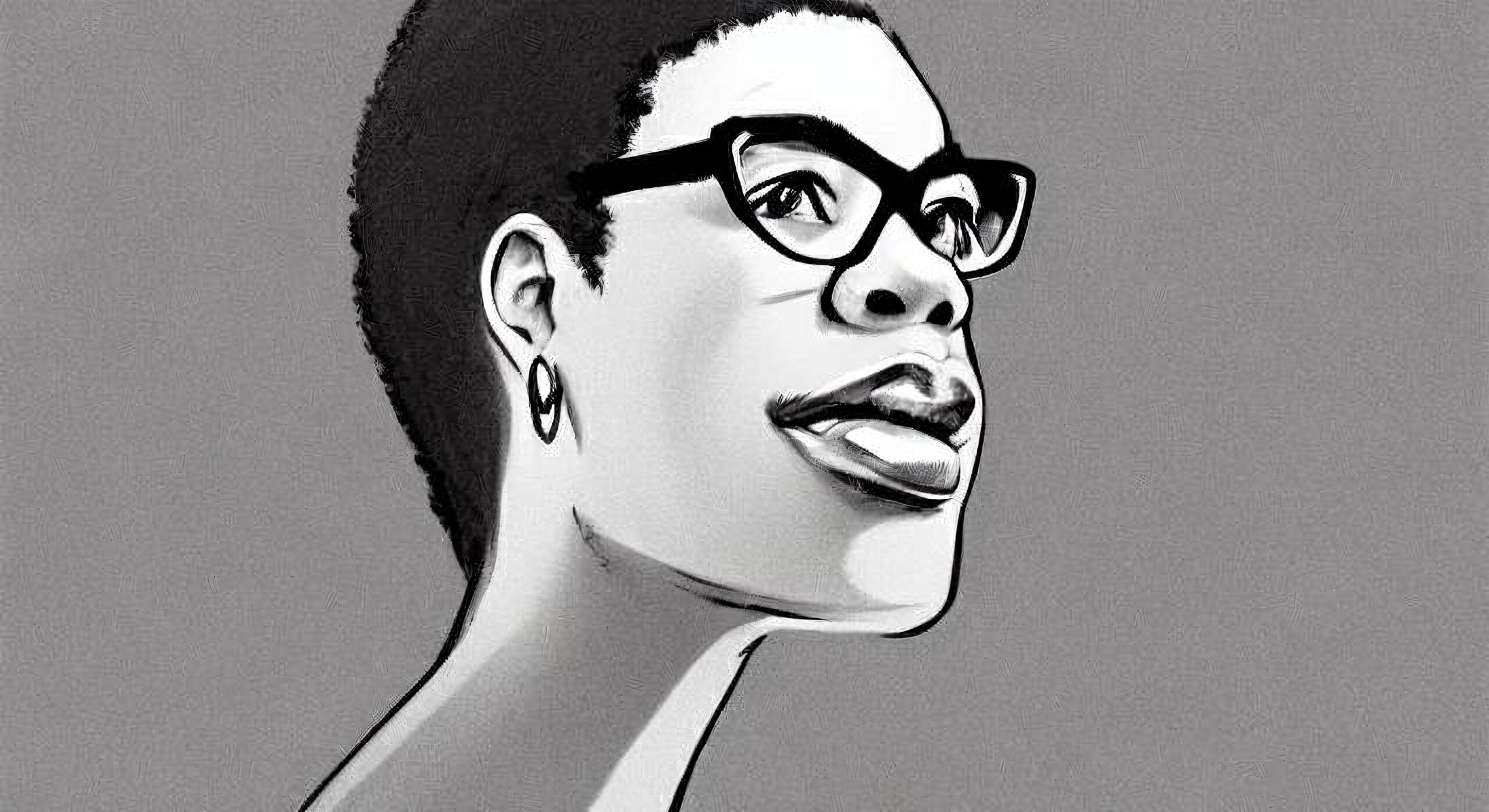
How To Come Up With AI Art Ideas
There’s a misconception that creativity is some divine talent that only a lucky few are born with and that truly “creative” AI art artists sort of pluck out ideas from thin air.
This could not be further from the truth.
AI art ideas don’t come from a vacuum. They come from other ideas. Our minds are libraries of thoughts, images we’ve seen, and experiences we’ve had, and when we make novel connections between them, we suddenly have new ideas.
Here is a three-step way of doing this:
First and foremost, understand the brief or concept you’re trying to create.
Who are you creating the art piece for?
What feeling must it adopt and communicate?
What’s the essence of the art piece?
Once you’ve grasped the concept, you should have keywords that summarize the brief.
Next, start looking for ideas that are related to your keywords. This could be images, words, humor, phrases, people, or anything else you think might be relevant.
Brainstorm the list by:
Using image search engines like Google, Pinterest, or Unsplash to explore related visuals
Looking for inspiration in other art styles
Using online tools like WordNet or Thesaurus to find related words and concepts
Look at your gallery of old ideas to see if you can repurpose any of them
In your search, don’t think too hard; Instead, let the feelings that the AI art piece you want to make must convey guide you.
Finally, after collecting a good number of ideas, connect them. Start thinking about how to mix and juxtapose concepts to create new ones.
With this in mind, let’s move on to the next step – structuring the newly born AI art idea into a good text prompt.
Turning An AI Art Idea Into A Text Prompt
Now that you have an idea of the image you want to generate, it’s time to start thinking about how it can be turned into an actual text prompt.
A text prompt for an AI art generator is a descriptive recipe that tells the AI art generator tool what image to generate. Text prompts usually have several key ingredients – content type, subject matter, and style keywords.
Let’s break each of these down so you can see how to apply them appropriately.
The Content Type
The content type is what the generated art will be – a portrait, sketch, etc.
If you’re unsure what kind of content you want, ask yourself the best way to communicate your idea. Would a photo be more effective? A painting? A drawing? A 3D render?
For instance, the prompt could be, “A painting of .....”
Other artistic styles and techniques to try include:
A watercolor painting of, a woodblock print of, an oil painting of,
High-quality DSLR photo of, street portrait of, a charcoal sketch of
3D art based on animation of, acrylic on canvas, an etching of,
digital art, psychedelic art, pixel art, synthwave art
A children’s drawing of, pencil sketch, deco art,
and more
The Subject Matter
The subject matter is what the generated art will be about. This could be a person, an object, a scene, or anything else.
Ask yourself:
Who or what is the subject?
What are the subject’s attributes?
What are the details of the scene or environment?
When deciding on the subject matter, it’s best to choose one with many photos on the internet. This is because the more pictures there are, the easier it will be for the AI art generator to find similar images and understand how the subject looks.
For example, a house, a temple, Zeus, a dog, a car, a landscape, a kingdom, and so on.
Always describe your subject’s characteristics in terms of positives and not negatives. This is because negative words like “not,” “but,” “except,” “without,” and “no” are often ignored or mishandled by language models.
So, instead of saying “a painting of a dog that is not aggressive,” say “a painting of a dog that is playful and friendly.”
And lastly, the goal is to be as specific as possible without overwhelming the algorithm.
Here are great examples from Midjourney’s prompt guide:
| Okay AI Image Text Prompts | Better AI Image Text Prompts |
|---|---|
| monkeys in business | three monkeys in business suits |
| cyberpunk wizards | three cyberpunk wizards |
| clothes humans will wear 12,000 years into the future | wildly futuristic clothing with glowing and colorful decoration |
| a monkey on roller skates juggling razor blades in a hurricane | a monkey that’s a hurricane of chaos |
Continuing with our painting prompt example from before, the prompt could now be:
“A painting of a surreal landscape of a rocky beach with an abandoned castle...”
Style keywords
Style keywords describe the overall style or tone of the AI art piece.
There are five ways you can reference styles you were inspired by in your prompt:
1. Styles from specific films and TV shows
You can “borrow the look” from a popular film or TV show by naming it (preferably with the year in brackets)
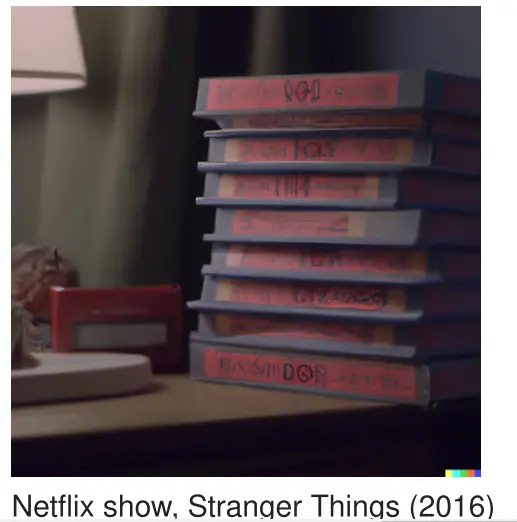
Here are examples sourced from Dalle-E2 Prompt book:
A man in a Grim Reaper costume, from Friends TV show Friends, Season 3 (1997)
A pile of books on a bedside table, from the Netflix show Stranger Things (2016)
2. Styles based on the context
Putting things in context can occasionally provide a coherent look: Should the generated image look like something from a fashion magazine, a wedding photographer’s portfolio, or an art gallery?
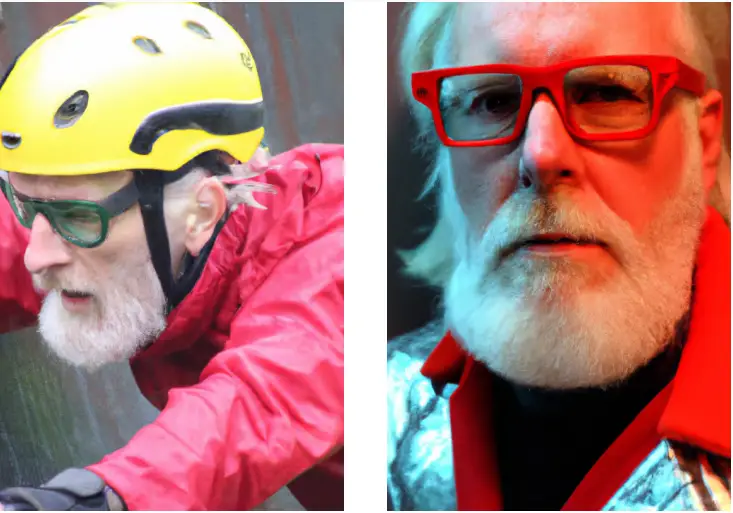
Left: action sports photography, fast shutter speed from ESPN, Right: editorial fashion photography, from Vogue magazine
Here are examples sourced from the Dalle-E2 prompt engineering guide:
Photo of a 50-year-old white man, silver hair, neat beard, wearing a red gilet, thick-rimmed glasses, editorial fashion photography, from Vogue magazine
Photo of a 50-year-old white man, with silver hair, neat beard, wearing a red gilet, thick-rimmed glasses, action sports photography, fast shutter speed from ESPN
3. Style based on late artists
You can also ask the AI art generator to generate an image in the style of a specific painter, photographer, or another type of artist.
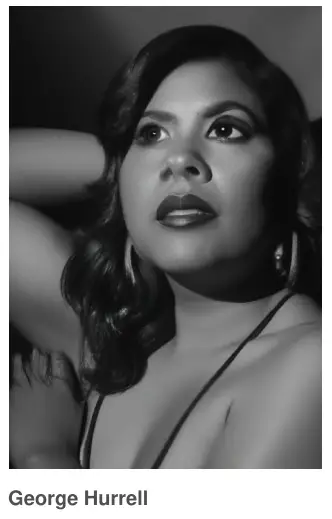
Here are examples sourced from the Dalle-E2 prompt engineering guide:
A cat sitting in a chair, wearing a pair of sunglasses, by Salvador Dali
A cityscape skyline during sunset, by van Gogh
Photo of a young Mexican woman in the style of George Hurrell
4. Use style keywords based on your content type
If you are making a photograph, speak like a photographer and use keywords to describe the camera’s angle, proximity, settings and lens, lighting, and film type.
What are the words painters use when creating a painting to describe the color palette, brushstrokes, etc.?
Based on your content type, research the language used to describe it and use those keywords.
5. Use art modifiers
These are words you can use to describe the composition of the image. What is the quality, detail, and size you are aiming for?
Here’s a list:
detailed, highly detailed, simple yet detailed
ultra-realistic
Studio quality,
Award-winning
trending on Artstation
Unreal Engine
4K/8K
Use the year modifier, e.g., 1930s mugshot
Reference the Dalle prompt engineering guide to determine how to use the above modifiers.
Continuing with our painting prompt example, I decided to reference the surreal artist Salvador Dali and add the modifiers, detailed and award-winning.
The prompt has now become,
“A painting of a surreal landscape of a rocky beach with an abandoned castle, in the style of Salvador Dali, detailed, award winning. “
In conclusion, when creating a text prompt for my AI art generator, I try to be as specific as possible. I start by thinking about what image I want and then narrowing it down by referencing details from particular films, TV shows, or artists that inspire me. I also use modifiers to describe the image’s composition in greater detail.
Of course, don’t be rigid about these steps. Leave what you don’t like.
Below is a compilation of lovely artwork generated by artificial intelligence and their prompts in case you need inspiration.
AI Art Ideas and Prompts From Other Artists
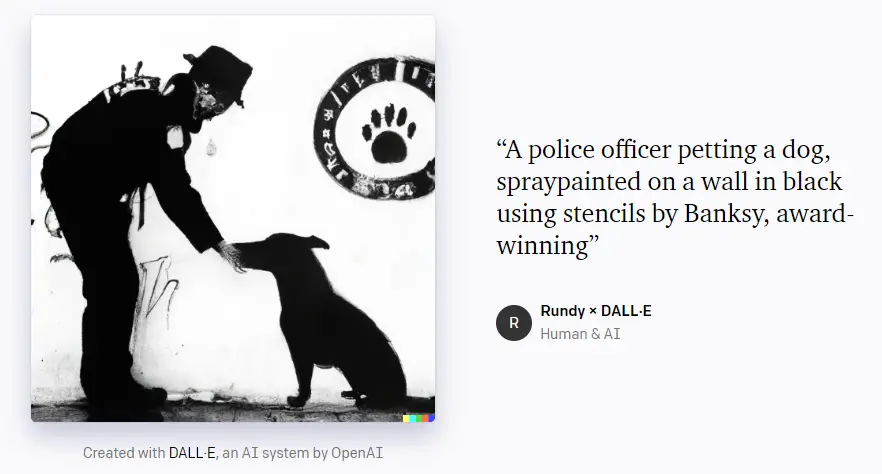
| AI Art Prompt | Content Type | Subject matter | Style keywords |
|---|---|---|---|
| A police officer petting a dog, spray painted on a wall in black using stencils by Banksy, award-winning | Stencil | A police officer petting a dog, spray painted on a wall in black | Artist- street art, BanksyModifier- award-winning |
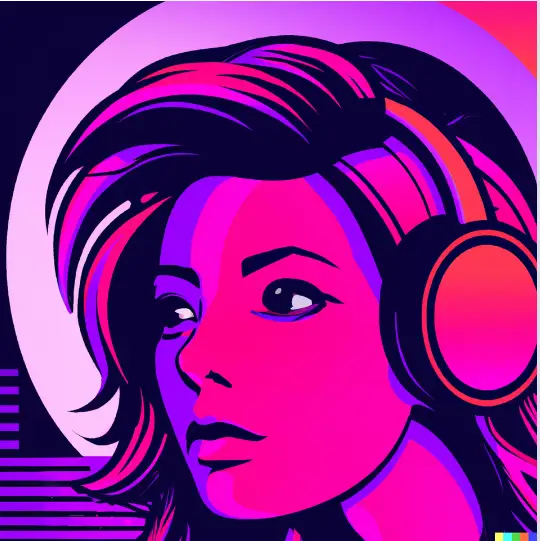
| AI Art Prompt | Content Type | Subject matter | Style keywords |
|---|---|---|---|
| a closeup of a female face with headphones in retro colors, synthwave style, 2d digital vector art | synthwave style, digital vector art | A female face with headphones in retro colors, | Close up, 2D |
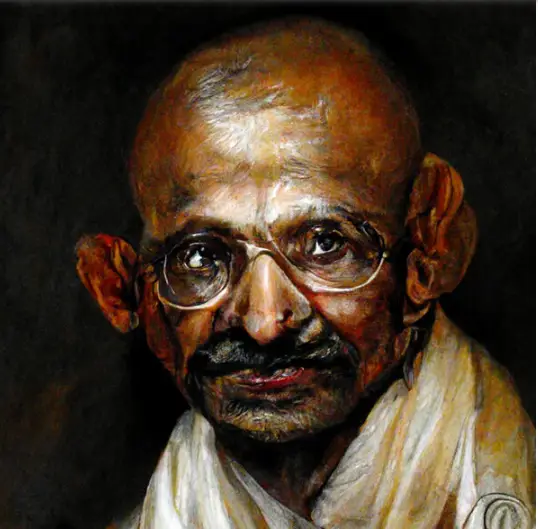
| AI Art Prompt | Content Type | Subject matter | Style keywords |
|---|---|---|---|
| portrait of Gandhi, in the style of Rembrandt | Portrait of | Gandhi | in the style of Rembrandt |
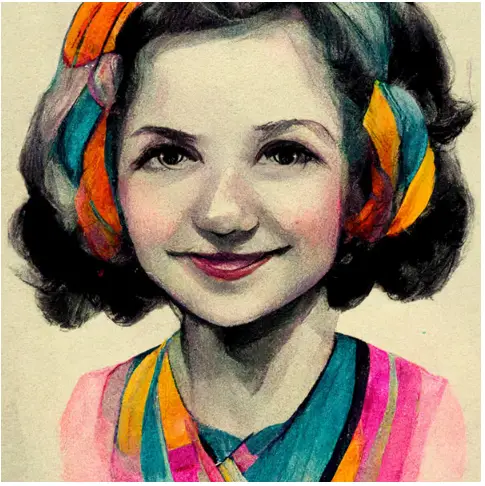
| AI Art Prompt | Content Type | Subject matter | Style keywords |
|---|---|---|---|
| portrait young girl in the style of mary engelbreit + mary borgman, colorful colored pencil , ink drawing | Portrait of…, ink drawing | young girl | in the style of mary engelbreit + mary borgman, colorful colored pencil |
These examples are just a taste of what you can create with these tools – so be sure to experiment and see what kinds of results you get.
Once you start using these effective tips on the best AI generator tools, you may find that your artwork turns out so good that you want to sell it. If that’s the case, here are some tips on how to price digital art.